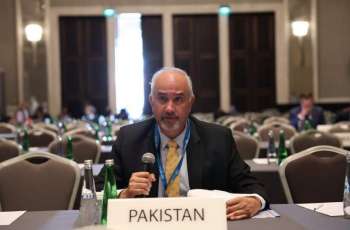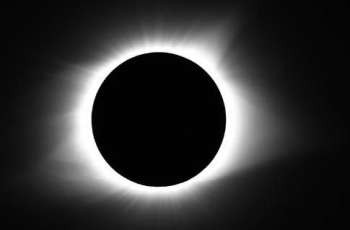MOSCOW (Pakistan Point News / Sputnik - 26th April, 2020) Thirty-four years on, the former Soviet town of Pripyat, which hosts the defunct Chernobyl nuclear plant, is now a tourist hotspot for thrill seekers, yet such 'nuclear tourism' raises questions not only of ethics but of safety, as the levels of radiation in the exclusion zone remain critical.
April 26, 1986, one of the worst man-made disasters in history, the explosion � some reports say explosions � at the Chernobyl nuclear power plant took place, making the Soviet model nuclear town of Pripyat a ghost town. The large amount of radioactive material that was released into the atmosphere contaminated large parts of Ukraine, Belarus and the European part of Russia. The radioactive isotopes reached eastern Europe, the Scandinavian nations, as well as Switzerland and Austria. The disaster led to increased amounts of cancer rates among children and adults, as well as to birth defects.
Soon after the disaster, the Soviet Union set an exclusion zone that covered an area of about 1,000 square miles. Today, high levels of radiation still make Pripyat uninhabitable for hundreds, if not thousands, of years to come. Yet the dangers of radiation have not stopped adventurists from thronging through deserted nurseries, funfairs and stores in the abandoned city to take selfies � often inappropriate -�at the infamous Chernobyl Ferris Wheel.
The region saw an immense tourist boom after the critically hailed HBO mini-series, Chernobyl, which detailed the circumstances around the tragedy and the enormous liquidation efforts. The area has become a major tourist attraction, with many taking numerous photos of the area, despite no official authorization from the Ukrainian government.
In summer 2019, Ukrainian President Volodymyr Zelenskyy declared Chernobyl an official tourist attraction, saying that a green corridor for tourists, a safe and authorized passage, would remove pretexts for petty corruption.
The question of whether the exclusion zone should be opened for tourists emerged in April after reports claimed that stalkers were behind the forest fires near the defunct plant earlier that month. By April 7, the fires had reached within two miles of a nuclear waste storage site.
The firefighters eventually managed to extinguish the fires, yet smoldering remains. Last week, Kiev residents, however, were advised not to open windows and stay indoors due to the smoke caused by the wildfires. However, the authorities said that the radiation levels remain within the norm.
Meanwhile, Linda Pentz Gunter from the Beyond Nuclear group believes that the existing radiation levels, not just the fires, should deter tourism in the area.
"These places also represent terrible loss to those who lived there and who were abruptly forced from their homes under the misapprehension that they might be gone for only a few days," she told Sputnik.
She believes that any attempt to "normalize" radiation exposure and dismiss its genuinely harmful effects is "irresponsible."
"The fact that the Chernobyl Zone has become commercialized and a source of state income tramples on the dignity and respect of those forced to abandon it," she concluded.
The Chernobyl disaster and other nuclear incidents, including the Three Mile Island accident in the United States that took place in 1979, fueled numerous anti-nuclear sentiments. Mainly, following the Chernobyl disaster, the Soviet Union, and then Russia, halted the construction of many nuclear reactors and ordered the modernization of the existing reactors. The country did not launch the construction of the RBMK reactors.
"The Chernobyl disaster, followed by Fukushima [in 2011], and preceded by Three Mile Island, has demonstrated that nuclear power is an inherently dangerous technology and that human error cannot be engineered away. The wide dispersion of radioactivity from the Chernobyl disaster � felt across the former Soviet Union and Europe especially � has resulted in on-going, if not permanent, health and environmental impacts," Pentz Gunter told Sputnik.
According to her, the notion of a peaceful atom is merely an "oxymoron." She stressed that it was important to know and remember how nuclear power was fueled.
"There is nothing safe � from a health or environmental perspective � about mining, milling and processing uranium; about operating a nuclear power plant; or about the mountains of radioactive waste they produce with no known, safe, long-term management solution yet discovered," she added.
The Fukushima disaster showed that history had repeated itself, Pentz Gunter said, recalling that the accident was "a result of 'collusion' between the government, industry and regulator."
According to the expert, very few countries have learned from the mistakes of Chernobyl. She believes that stricter rules and safety requirements only work if they are enforced.
Yet, there are those nations that have completely abandoned nuclear power for electricity. In 1987, in the wake of the Chernobyl disaster, Italy held a referendum that ultimately led to the government's decision to phase out all existing nuclear reactors.
MINIMUM CHANCES OF REPETITION OF ACCIDENT
Meanwhile, debates about nuclear power are still ongoing. Many pro-nuclear groups and scientists across the globe argue that it is much safer than most energy sources, like coal and gas. They say that nuclear power has improved the performance and the safety of reactors and introduced safe re-designs and is a sustainable energy source that reduces carbon emissions.
Aleksander Sannikov, a senior researcher at the Institute for High Energy Physics (IHEP), located in the Moscow Region, believes the accident of such a scale now is hardly possible.
"No one will give a 100 percent guarantee [that such an accident would never happen], but the possibility of such an event is so small that it is somehow taken into account nowadays. Then we have the minimization of consequences, an aspect which is taken into account in the projects of such stations," he told Sputnik.
He recalled that after the Chernobyl disaster, many research institutes and power stations were closely inspected and upgraded. The IHEP, which known for the particle accelerator U-70 synchrotron, was also renewed back then.
With strict rules and proper maintenance, nuclear plants are not a hazard. Sannikov drew an example of coal-fired power plants which are much more harmful to human health and the environment than the nuclear ones.
"Coal contains a small fraction of radioactive substances, which, as a result of burning, spread over a large area and lead to constant radiation. The inhaling of these harmful fumes from coal-fired nuclear power plants leads to a huge number of diseases," he said.
According to Our World in Data, a scientific online publication that focuses on large global problems, nuclear power is far safer than fossil fuels, contrary to public belief. It repeatedly presents the data on death rates from air pollution and accidents related to coal, gas and oil and highlights that nuclear power has caused fewer accidental deaths per unit of energy.



